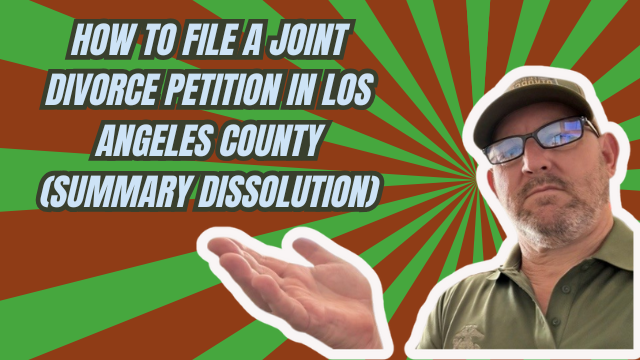Reasons Why You Don’t Want to File a Summary Dissolution in a California Divorce
Summary dissolution sounds appealing: faster, simpler, and labeled as an easier path to divorce. In practice, it often ends up being more complicated and, in many cases, more expensive than a regular dissolution. Here’s what you need to know before choosing this route.
Why summary dissolution looks attractive
The court’s description makes it seem straightforward. It promises less time in court, less paperwork, and a streamlined process. For couples who meet the strict requirements, that can be true—but many people misunderstand what “simpler” really means.
Why a summary dissolution can be a bad idea
- It can cost twice as much up front. Summary dissolution is filed as a joint petition, which means both parties are generally required to pay the court filing fee. In contrast, in a default or certain regular dissolution scenarios, only the filing party may pay. That doubles your immediate out-of-pocket cost for the filing fee.
- Eligibility is restrictive. The rules for qualifying for summary dissolution exclude many couples. If you don’t clearly meet those requirements, you can’t use the process.
- You still have to prove you qualify. The court expects a detailed financial analysis showing you meet the summary dissolution criteria. That paperwork can be substantial and technical—often more work than a regular dissolution filing.
- “Simpler” isn’t always simpler in practice. Because you are attempting to fit your case into a narrow, joint framework, you may encounter complications that require legal help. That can increase both time and cost.
Summary dissolution may seem easier, but because it’s a joint petition it can be twice as expensive—and more complicated—to get divorced this way.
Example
As a concrete example, if a county’s filing fee is $435, a single-party filing in a regular dissolution would typically cost $435. With a summary dissolution both parties normally pay, resulting in a combined immediate cost of $870 just for filing.
When a summary dissolution might make sense
The main exception is when both parties qualify for a fee waiver. If neither spouse needs to pay the filing fee, the doubled-cost problem disappears. In that scenario it can make sense to use the summary route if you both clearly meet the eligibility rules and prefer the joint petition format.
That said, fee waivers are available for regular dissolutions as well, so the choice should be based on which process fits your situation, not only on filing fees.
Alternatives to consider
- Regular dissolution: More flexible, often better when one spouse will handle filing or when complex issues exist.
- Hybrid or default cases: These can reduce the need for both parties to pay up front and might be preferable when one spouse is not participating or when the parties cannot jointly qualify for summary dissolution.
Practical steps to decide
- Confirm whether you meet the summary dissolution eligibility rules for your county and state.
- Calculate the total filing fees and determine whether both parties would be required to pay.
- Check whether either spouse qualifies for a fee waiver and understand how that changes the equation.
- Compare the paperwork and evidentiary requirements for summary dissolution versus a regular dissolution.
- Consult a family law attorney to get an assessment tailored to your specific finances and goals.
Bottom line
Summary dissolution can be the right choice in a narrow set of cases, but it is not the easy or cheap default people assume. Because it is a joint petition with strict qualification requirements and a substantial financial showing, it can be both more complicated and more costly. Evaluate eligibility and fees carefully, and consider regular, hybrid, or default options if you want a simpler or less expensive path. When in doubt, get legal guidance so you choose the process that truly fits your situation.



